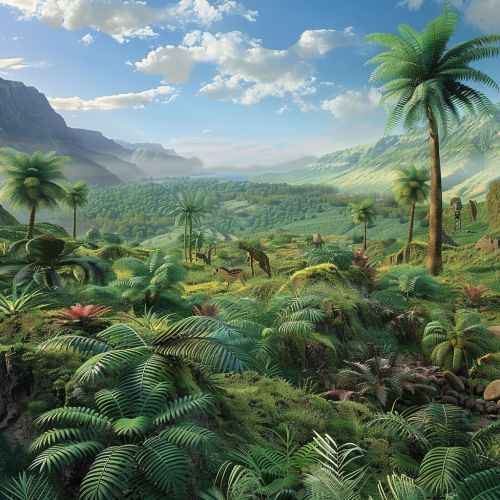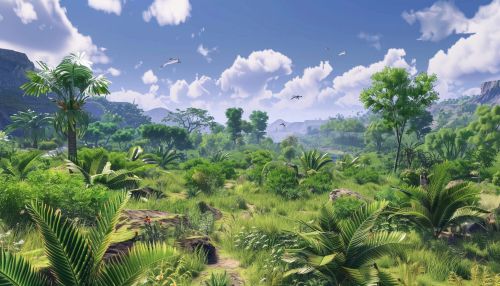Paleogene Period
Overview
The Paleogene Period, spanning from 66 million to 23 million years ago, is a significant era in Earth's history, marking the beginning of the Cenozoic after the extinction of non-avian dinosaurs. It is divided into three epochs: the Paleocene, Eocene, and Oligocene. This period is characterized by the emergence and evolution of mammals and the significant changes in Earth's climate and geography.


Paleocene Epoch
The Paleocene Epoch (66 to 56 million years ago) is the first epoch of the Paleogene Period. It is marked by the recovery of Earth's ecosystems after the Cretaceous–Paleogene extinction event, which led to the extinction of three-quarters of the plant and animal species on Earth, including non-avian dinosaurs. The Paleocene saw the rapid evolution and diversification of mammals and birds, filling the ecological niches left vacant by the extinction event.
Eocene Epoch
The Eocene Epoch (56 to 33.9 million years ago) is characterized by the continued diversification and dominance of mammals on land and in the sea. The climate during this epoch was significantly warmer than today, with tropical conditions extending to the polar regions. This warm climate facilitated the spread of lush, tropical forests across the globe, providing ideal conditions for the evolution of a diverse range of plant and animal species.
Oligocene Epoch
The Oligocene Epoch (33.9 to 23 million years ago) is marked by a significant cooling trend, leading to the formation of the first permanent ice caps in the Antarctic. This epoch saw the emergence of the first grasslands, which led to the evolution of large grazing mammals. The Oligocene also saw the first appearance of many modern mammalian families, including canids, felids, and equids.
Climate and Geography
The Paleogene Period saw significant changes in Earth's climate and geography. The period began with a warm, equable climate, with tropical conditions extending to the polar regions. However, towards the end of the period, the climate cooled significantly, leading to the formation of the first permanent ice caps in the Antarctic. The geography of the Earth also changed dramatically during this period, with the continents moving from a relatively compact configuration at the start of the period to their current positions by the end.
Flora and Fauna
The Paleogene Period is characterized by the emergence and evolution of a diverse range of plant and animal species. The extinction of the dinosaurs at the end of the Cretaceous Period left many ecological niches vacant, which were quickly filled by mammals and birds. The period saw the evolution of many modern mammalian families, as well as the first grasslands, which led to the evolution of large grazing mammals.
Conclusion
The Paleogene Period is a significant era in Earth's history, marking the beginning of the Cenozoic Era and the emergence and evolution of mammals. The period is characterized by significant changes in Earth's climate and geography, as well as the evolution of a diverse range of plant and animal species.
